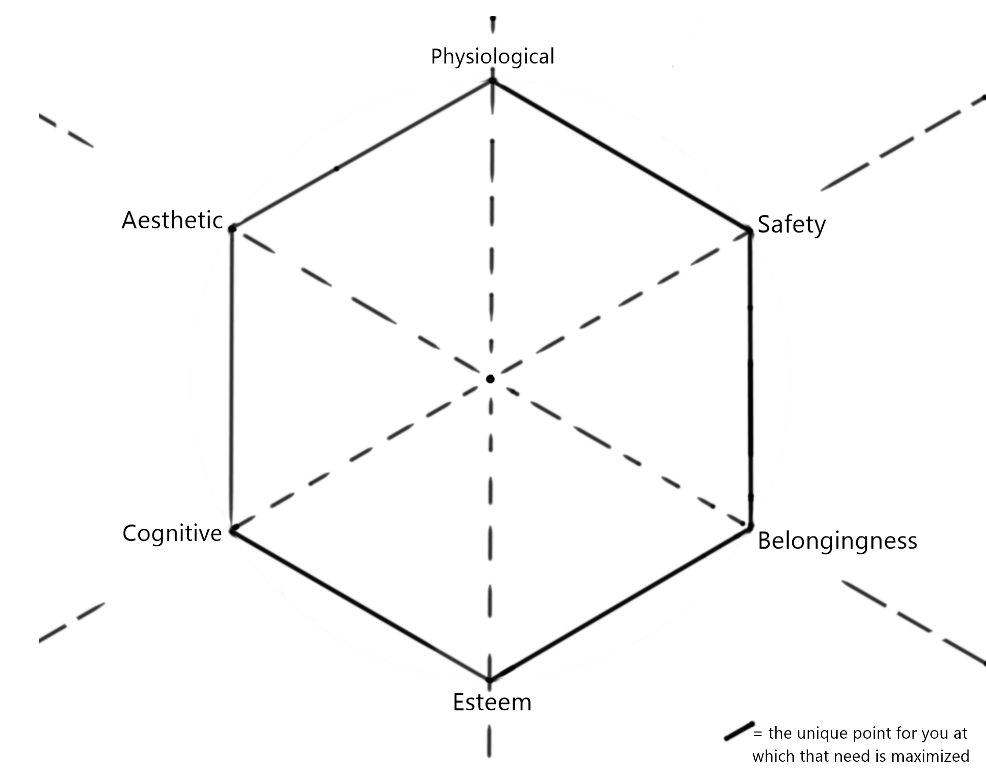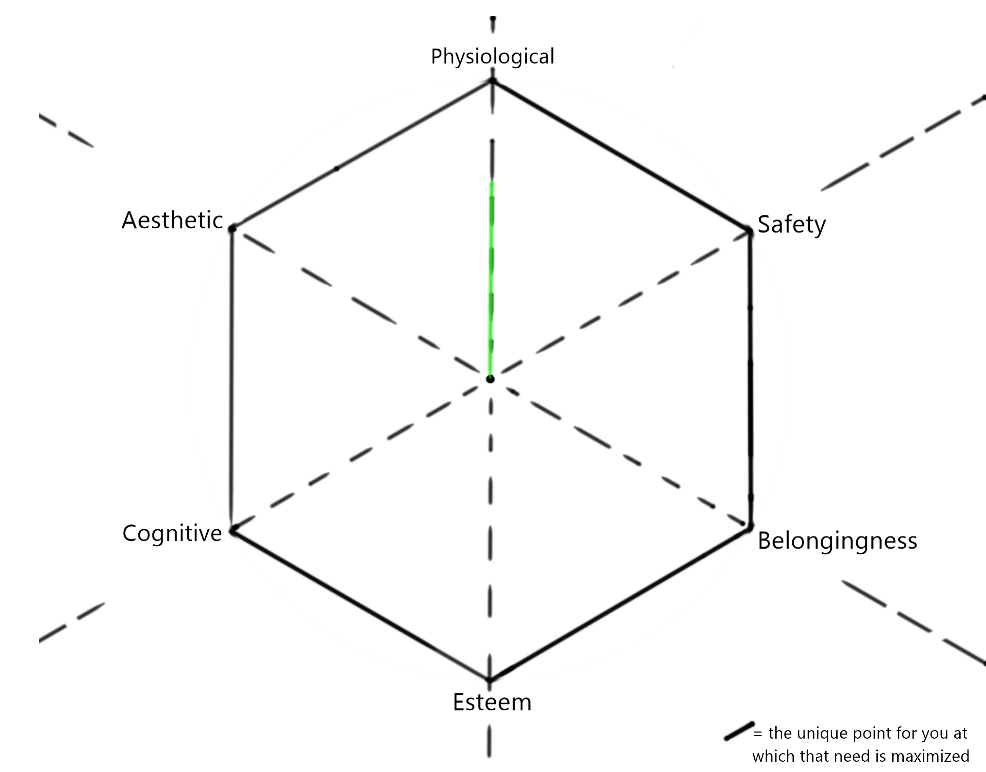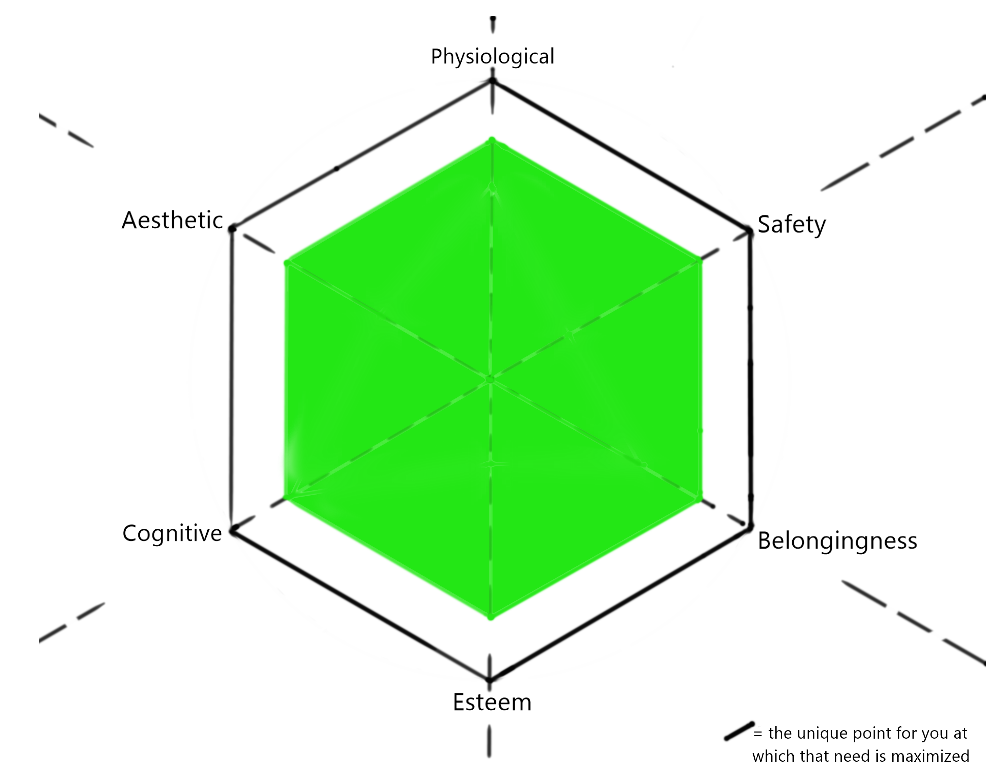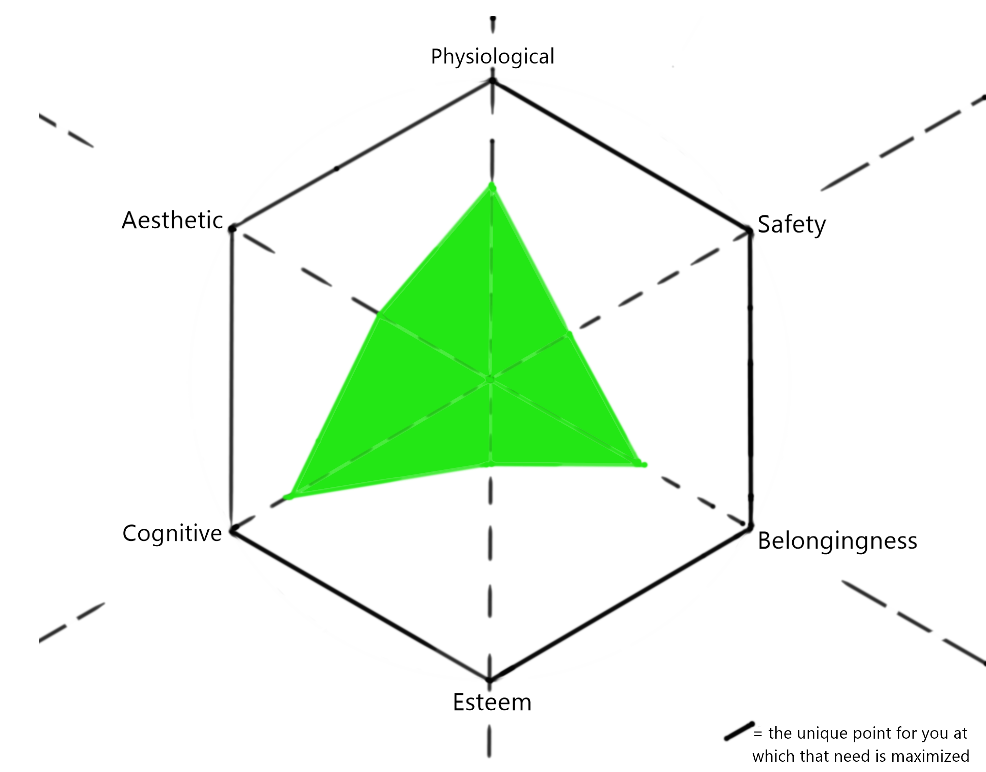Maslow Is Misleading You
Maslow’s Hiearchy
Traditionally the Maslow Hierarchy is presented in the following form:

While I think the multiple levels of the hierarchy are a good representation of many of the needs we as humans have. The concept of the hierarchy and the visualization of a pyramid can have a negative impact on our sense of fulfillment/self-actualization and on obtaining transcendence.
We have a rational understanding that there is no filling up, checking off, or completing the foundation for your physiological or safety needs. Our needs fluctuate minute by minute let alone throughout our lifetimes. Each of us as individuals has a unique combination of needs at higher or lower levels as compared to others.
But the way the hierarchy is presented does not account for this complexity. Instead it feels like we must have all of our physiological needs fulfilled in order to be able to begin addressing our needs for safety. This justifies a sort of stickiness to some of our favorite needs. We can’t spend the time addressing our need for aesthetic beauty until we have achieved stability. But true stability is never achieved. We must learn to live with our needs and not stick to them. The reality is that each need is a dimension upon which we can grow our sense of fulfillment.

When we view our sense of self-actualization and transcendence as a multi-dimensional graph, we can see that it isn’t by maximizing a single need that we can achieve self-actualization. This is obvious in practice. No one ever works to ensure only one need is fulfilled.

Instead we need to maximize the area of our multi-dimensional graph in order to give ourselves the best chance of achieving self-actualization. You’ll note that this is a relative scale. The hard outer line forming the hexagon is dependent on our unique personality and character. The soft green inner area is dependent on how well our needs are being fulfilled.

If the graph were absolute instead of relative to us as individuals it might look like this:

How well are you maximizing your multi-dimensional graph? Have you been spending too much time trying to establish financial stability or been overly focused on achievement and status? Push out across some other dimensions and you may find it enhances your happiness in life. In the past, mountain men had lower tolerances for physiological, safety, and perhaps belonging needs, but likely with a stronger need for esteem. Some kids even from a very early age will get caught up working through a puzzle rather than wanting to eat. As the human race, our historical tolerance for our physiological and/or safety needs not being met is surprisingly high across history. Few people had strong assurances that they’d survive the coming winter; despite this fact, they would sing, dance, invent games, and spend time studying the universe. Altruistic behavior when people are in circumstances that obviously are not meeting all their needs re-emphasizes this fact. Coming to terms with the unique balance of needs met that optimizes your happiness will play an important role in your self-actualization. You don’t need to wait before you can start maximizing the area on your graph. Have a beautiful life!